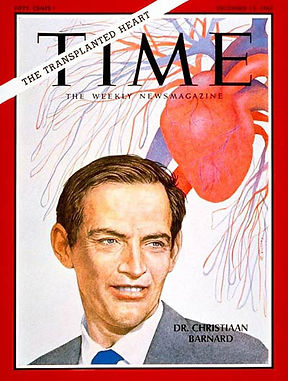

JOHN OPIE MD
ABOUT ME



The Opie family has had a Coat of Arms for more than 600 years. Readers who may be familiar with heraldic Coats of Arms will notice there is no "Bar Sinister" in this shield. So far as I know the Opies remain a pure bloodline.
Below for comparison, is the Coat of Arms of the Duke of Grafton. It was approved in 1675 by King Charles II of England for Henry Fitzroy - his second illegitimate son by the Duchess of Cleveland. You will notice passing from upper right to bottom left is a blue and white "bar sinister."
That is not such a good thing to have on a Coat of Arms. What that traditionally means is an illegitimate offspring of a pure bloodline. Translate that to "don't mess with me - I'm a bastard." We see echoes of the bar sinister today in - no exit, no smoking, no entry, no parking signs etc. A bad outcome will occur.
The Opies are said to be mentioned in the Magna Carta ratified by King John of England at Runnymede, June 15, 1215. However, the original document is written in Latin - multiple names are recorded in the bottom section of the Magna Carta but the Opie name does not appear in the translated versions. This Opie Coat of Arms was designed and approved at Payton in St. Oreock, St Erme & Penhargard, Cornwall, documented on page 517 of An Ordinary of British Armorials & Garbs to Thomas Opie in 1573 during the reign of Queen Elizabeth Ist. Three hundred years before the Coat of Arms arrived, was another Opie. The spelling changed and was modernized in the 1500s as the centuries passed.
There is a notation that Roger Oppy married Kathleen Sherry in 1298. All of the Opies carry some of his DNA. His father would have been around at the time of the Magna Carta - essentially a peace treaty between the unpopular King John of England at Runnymede and his rebel barons. It provided the Church protection from Government forces and feuding barons. Some of its provisions got into the First Amendment of the U.S. Constitution.
I have a rather poor quality brass rubbing of his image taken from a plaque on his headstone. Again, in Truro, Cornwall where most of the Opie family comes from. That was the land of the legendary King Arthur and his beloved Gwenevere, and his feared Knights of the Round Table and the famous Excalibur sword plunged in the stone that no one other than the rightful King of England could withdraw. Arthur did just that. That legend exists around the 5-6th century AD. About the time the Romans left England.
Since about 1876 the Opies have traveled and settled worldwide.
My ancestor Roger Oppy ~1298
Dr. John Opie, your author, was born and raised in Auckland, New Zealand. He became a U.S. citizen in early 2005. During his final year of medical school, he volunteered to serve in Vietnam and completed one TOD in 1968-9 as a combat surgeon. After graduating from medical school in Dunedin, he completed a four-year residency program in New Zealand. In his second rotation, he worked at Greenlane Hospital in Auckland and spent three months on Sir Brian Barratt-Boyes' cardiac surgical unit, and soon got the bug for heart surgery. After completing his residency, he applied for and was appointed the Open Heart Surgical Registrar at the Royal Melbourne Hospital in Melbourne. He spent 2 years in Australia and then his chiefs arranged for a senior registrar's position at the National Heart Hospital in London, working under Mr. Donald Ross of the Ross Procedure and Sir Magdy Yacoub - two of England's premier cardiac surgeons. Once that was completed, he rotated over to the Brompton Hospital in London, working under the guidance of Mr. Matthias Paneth who was a world authority on mitral valve surgery. He was recruited by Geisinger Medical Center in central PA in 1985 where he was extensively involved in pediatric heart surgery, heart transplantation, adult heart surgery, and major pulmonary surgery. In 1990, Dr. Opie was recruited to Phoenix and Scottsdale and he opened his own private cardiovascular and thoracic surgical practice there in 1993 and has remained there ever since. He has published about 30 surgical articles in peer-reviewed journals and presented on multiple occasions at major medical meetings all over America. He was the chief editor of a medical text called Pulmonary Embolism, published in Europe and he wrote a chapter on brain Injury and heart surgery in Neurologic Injury in Cardiac Surgery that is in many U.S. medical libraries. He is the inventor of monocusp surgery to correct chronic venous insufficiency - an otherwise incurable affliction, which has been around since before the days of the Eber's Papyrus. which dates to about 1550 BC. Dr. Opie has also acted as an expert medical witness for about 12 years. He was referred 26 major cases - 45% defense and 55% plaintiff - and never lost a case for the side he represented. During that time he continued his writing career. He declined to represent 4 referrals as he felt after review the side who approached him could not prevail. He also holds about 22 patents on various medical devices.
Monocusp publication Monocusp Results: An Autogenous Solution for Chronic Venous Insufficiency John C. Opie, MD, Paul J. Sos, MD, Thomas Izdebski, MS*, Richard Shacket, DO, MD(H), Jeffrey Alpern, DO, Asma Umer, MD.
VASCULAR DISEASE MANAGEMENT OCTOBER 2010 I VOLUME 7, NUMBER 10
Back during his surgical training days, Matt Paneth's grandfather was Joseph Paneth of Paneth cells of the small bowel. Paneth cells are the body's first line of defense against a bacterial invasion of the intestines. They lie in the Crypts of Lieberkuhn in the small bowel. Without them, life would be extinguished. Turns out grandfather Paneth and Sigmund Freud used to get up to mischief in Vienna during the late 1800s and early 1900s. Some folks know but many do not, Freud was a neurologist before he became a psychiatrist. During that time he discovered that cocaine could have a useful function as a local anesthetic and thus sparked a major revolution in eye surgery. These days we use xylocaine which is not addictive. Freud also found out that cocaine, if sniffed up his nose, made some aspects of his life better.
Author Dr. John Opie has three famous relatives - one ancestor is the very talented portrait painter John Opie RA (16 May 1761 – 9 April 1807 (The Cornish Wonder). He was a friend of the great painter Sir Joshua Reynolds. John Opie RA was particularly skilled in portrait paintings. Below are a few examples of his spectacular artistry. Many of his paintings reside in both the Tate and National Portrait Galleries in London. Three of Opie's paintings reside in the Brompton Hospital's Board Room - not unnoticed by the Board of Directors of the Brompton Hospital when Dr. Opie joined the residency staff at the Brompton. They asked him if I had any painting talent and pointed to the John Opie paintings on the wall. Dr. Opie sadly replied - none at all. All of John Opie's paintings are masterpieces and are insured for millions. He essentially acted as a camera in the late 1700s.
John Opie as a young man As a mature man Amelia Opie, his wife


Perhaps John Opie's most famous painting is his rendition of the Murder of Rizzio (1787), which is displayed in the Guildhall Gallery in Central London. An original size reproduction (113"x 94") will cost $3,969.99. The original is priceless and not for sale. It is insured for millions.

David Rizzio (c. 1533 – 9 March 1566) was an Italian descendant of an ancient and noble family still living in Piedmont - the Rizzio Counts di San Paolo e Solbrito. He rose to become the private secretary of Mary, Queen of Scots. Mary's husband, Lord Darnley, is said to have been jealous of their friendship, because of rumors that he had impregnated Mary. Lord Darnley joined in a conspiracy of Protestant nobles, led by 3rd Lord Patrick Ruthven, to murder Rizzio. The murder was the catalyst for Lord Darnley's downfall, and it had serious consequences for Mary's subsequent career. Mary was having dinner with Rizzio and a few ladies-in-waiting when Darnley joined them, accused his wife of adultery, and then had someone murder Rizzio, who was hiding behind Mary. Mary was held at gunpoint and Rizzio was stabbed numerous times. His body had over 50 wounds. He died in much the same manner of Julius Caesar on the Ides of March in 44BC.
My next famous relative (cousin) is Professor Lionel Opie MD, Ph.D. May 6, 1933 - Feb 20, 2020. He served as the professor emeritus in cardiology and hypertension at Groote Schuur Hospital in Capetown. His most famous days include his cardiology services in association with other cardiologists and surgeons to keep Louis Washkansky alive. For those who might recall Dr. Christiaan Barnard did the world's first human to human heart transplant on Louis Washkansky using a heart from Denise Davall, who was brain dead from a massive head injury in a car-pedestrian accident. There was some controversy over this heart donation in 1967 since the Harvard Criteria of Brain Death versus a beating heart was not formulated until 1968. Barnard solved that by administering IV potassium which stopped her heart and the transplant proceeded. Mr. Washkansky lived for 18 days before succumbing to pneumonia. (It took the discovery of Cyclosporin B (1971) to better control post-transplant infection and rejection issues. That immunosuppressant effect occurs due to the chemical's ability to suppress lymphocyte function which is important in solid organ transplantation rejection).
Professor Lionel Opie MD. PhD.

Dr. Christian Barnard


A final important ancestor of mine is Eugene Lindsay Opie MD (5 July 1873 – 12 March 1971). Professor Opie studied the pancreas as a pathologist and he observed consistent morphological alterations in the pancreatic Islets of Langerhans in patients with diabetes mellitus – an observational epiphany that shed light on the pathogenesis of diabetes mellitis. That discovery led to new methods to treat diabetes. He was appointed to the Chair of Pathology at Washington University School of Medicine (WUSM) in St. Louis. He served as Dean of the school from 1912 to 1915.